Getting to Mauna Kea to do astronomy is an adventure in itself. First you have to fly to Hawaii. Most people come to Honolulu, on the nearby island of Oahu. You then take an interisland flight to get to Hilo, on the island of Hawaii. Two airlines service the route, Aloha Airlines and Hawaiian Airlines. Aloha uses Boeing 737, Hawaiian Airlines use DC-9s which they replaced with Boeing 717s during 2001-2002.
Hawaiian Airlines DC-9
The island of Hawaii known locally as the "Big Island" since its an island, and its bigger than any of the others in the Hawaiian Island chain.
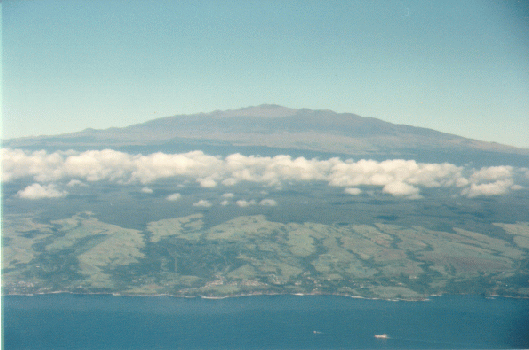
The view of Mauna Kea as your plane descends into Hilo. Notice how the clouds trap water below the summit, making it very dry on top. This is why we put our telescopes up here. Photo: John Davies
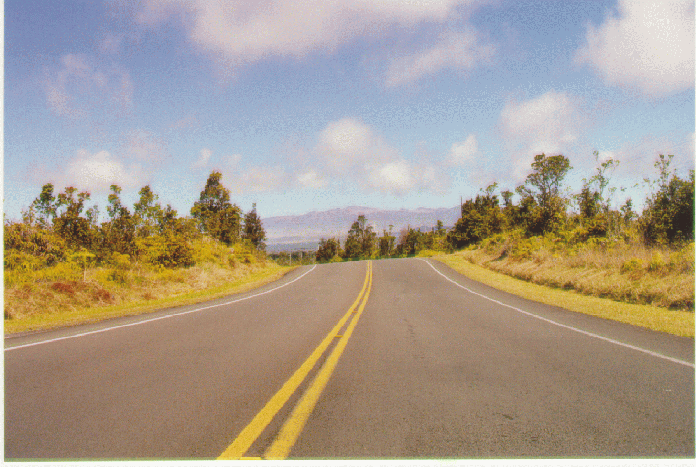
Leaving Hilo we first drive to our mid-level facility at Hale Pohaku, 10,000 ft above sea level. The drive starts in tropical rainforest but as the road climbs higher the vegetation changes steadily. After about 30 minutes of driving we pass through Ohia forests. The road ahead points at our ultimate destination, the 14,000 ft summit where the telescopes are located. Drive carefully, the road is narrow and twisting, and most hire car companies do not allow their cars on this road.

As you get higher the Ohia forest is replaced by lava fields, and Mauna Kea begins to dominate the view to the right side of the car. Soon it will be time to take the road on the right, and start the steep climb to our half-way house, Hale Pohaku.
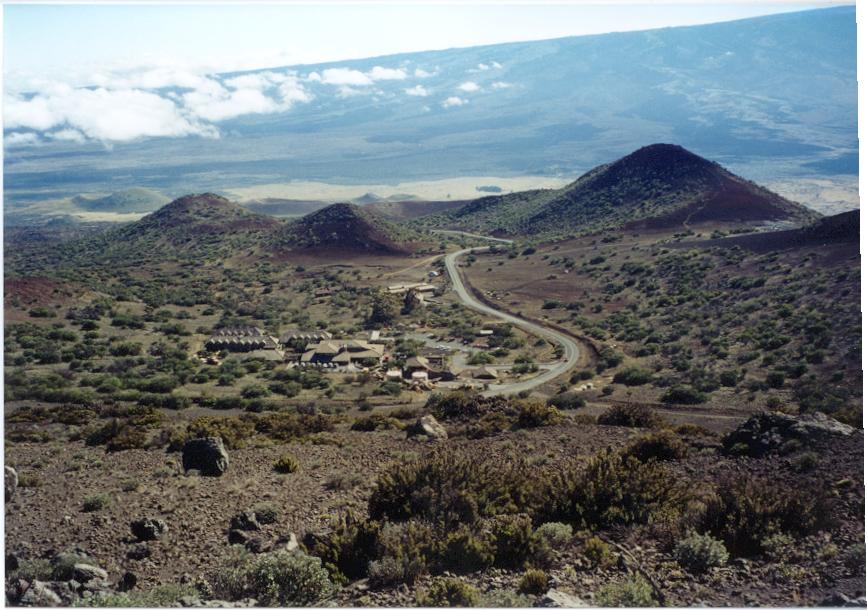
This is a view of the Hale Pohaku facility, whose full title is the Ellison Onizuka Centre for International Astronomy, but we know it as simply "HP". The main building is a cafeteria (not open to the public), some recreation rooms (TV and ping-pong) together with a library and some offices. Behind it are four buildings of individual rooms for visiting astronomers and the HP staff. A little way down the hill is the visitor centre where there are some displays and which is the site for public lectures and star-gazing. The little mounds behind HP are cinder cones from previous eruptions, and the big mountain in te background is Mauna Loa. Note that the vegetation is now not much more than scrub.
Before we astronomers go any higher, we change to some warmer clothes and board a 4-wheel drive vehicle since the road to the summit is not paved all the way, indeed you can see where it stops. If we plan to work all night then once at Hale Pohaku we normally spend the night before to allow our bodies to adjust to the altitude before we go any further. However, if you're a tourist in good health, or just going to the summit for a few hours, then stopping for an hour at the visitor centre is usually long enough to begin the adjustment. However, remember that the summit is almost 3 miles high, and the air is thinner than at sea level, there is only about 60% of the oxygen you were breathing a few hours ago. Also, be aware that the low oxygen levels are potentially harmfull for children, old people, pregnant ladies and so forth. If in doubt, check with a doctor before you come (the professionals do!).
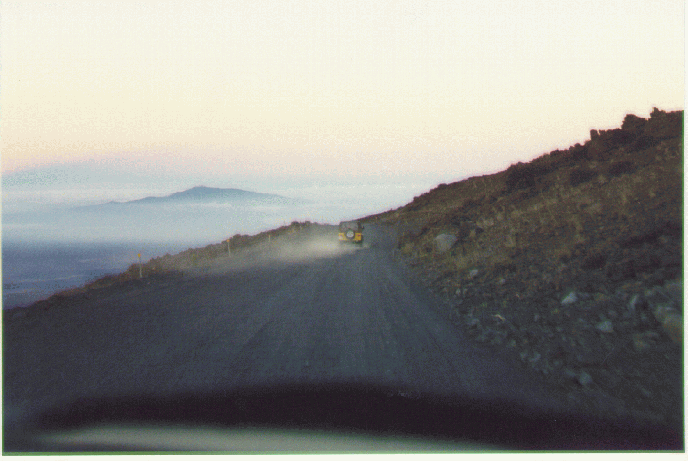
Here's a view of jeep being driven down the dirt section one morning. The dirt road is steep and the drops are dangerous, so keep your speed down......
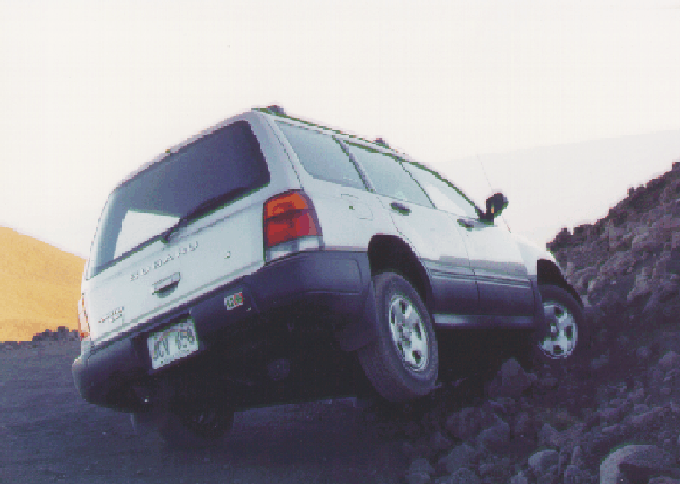
..... or else this may happen!
John Keith Davies
Return to
John Davies' homepage